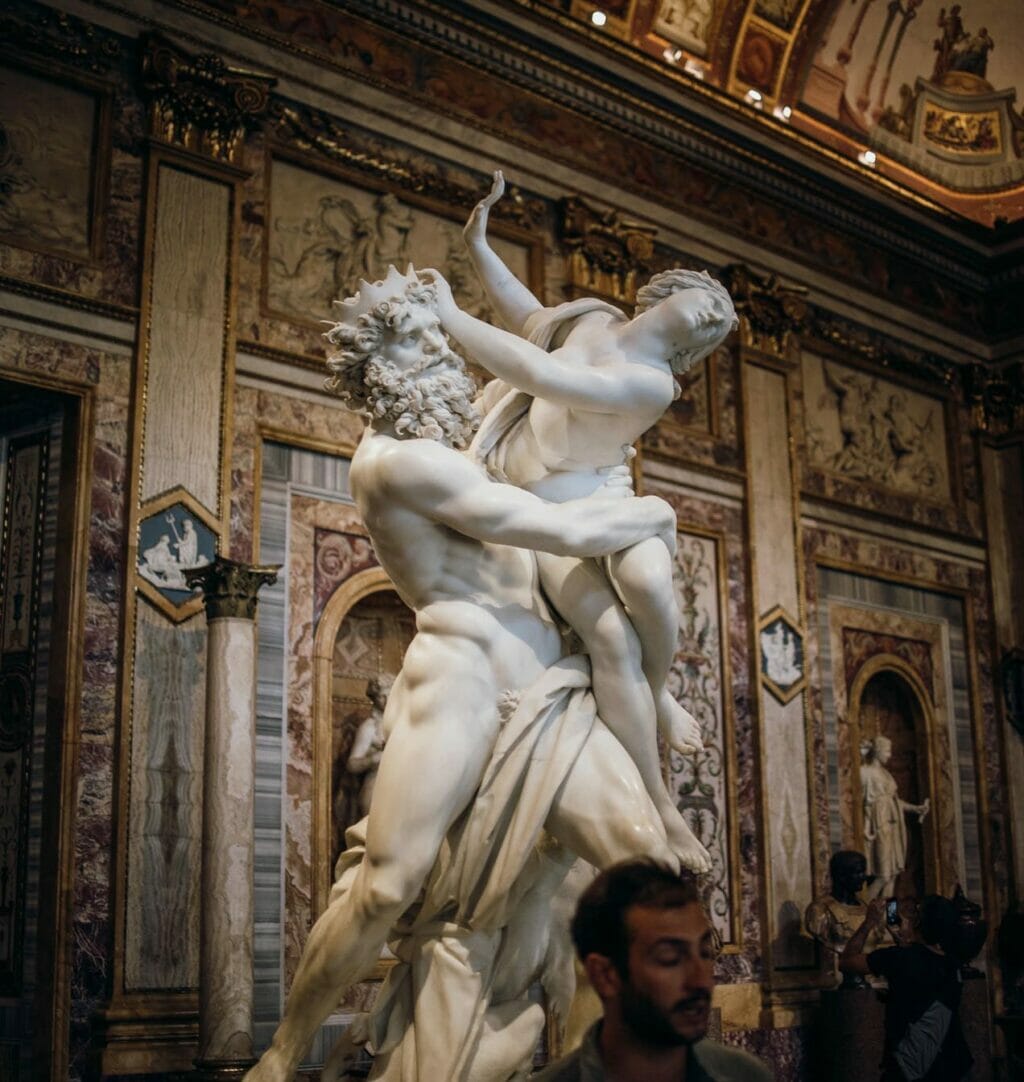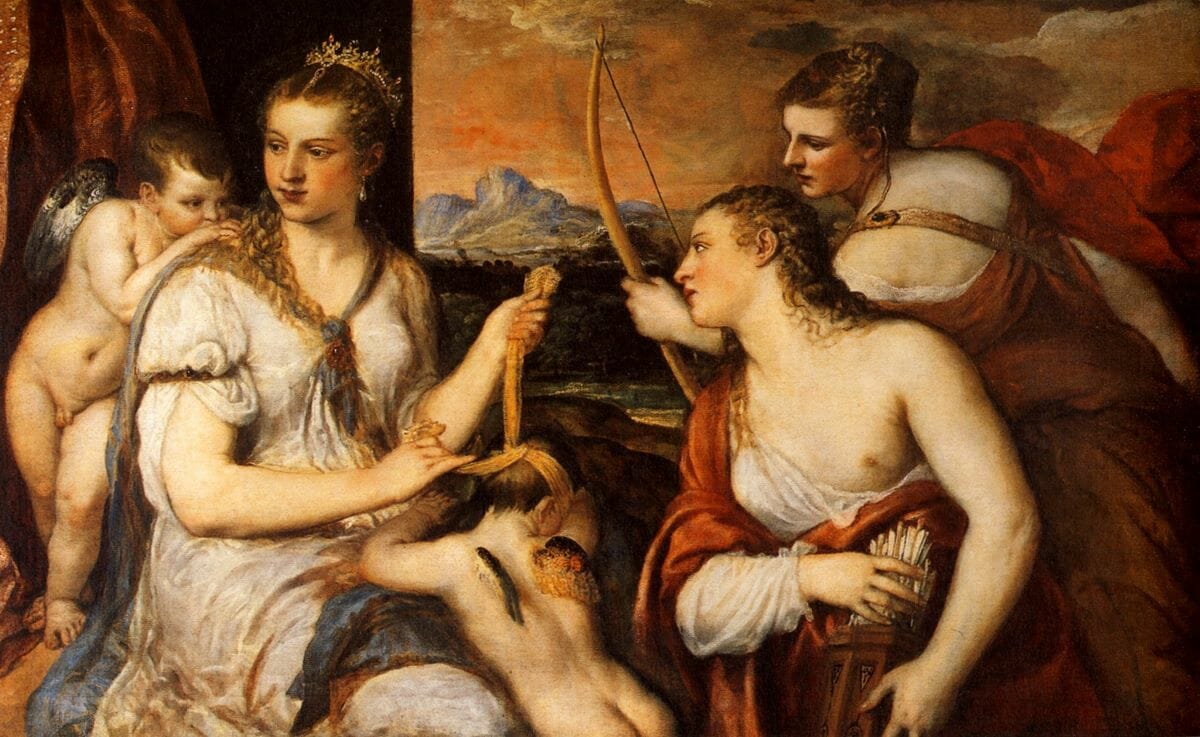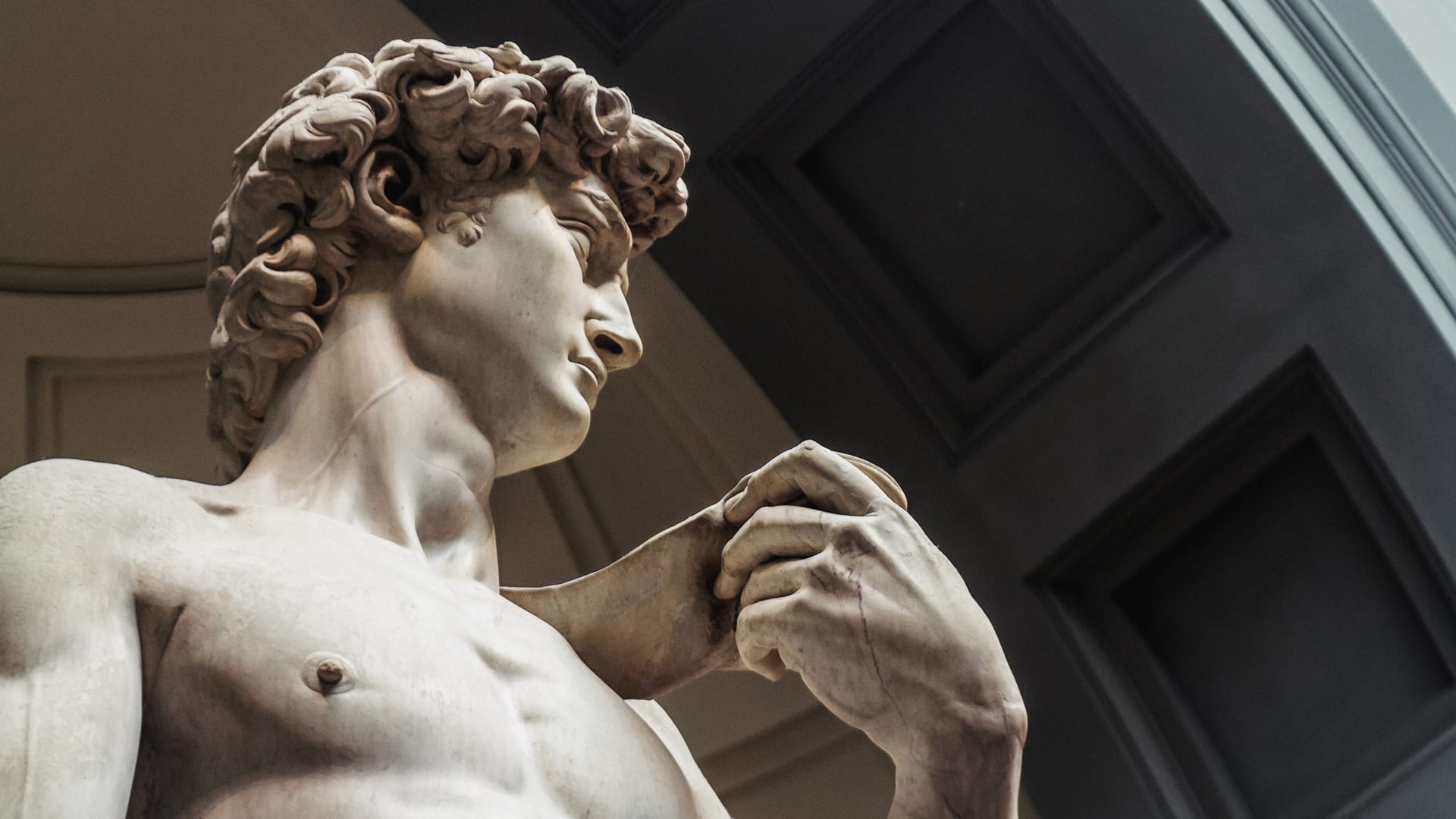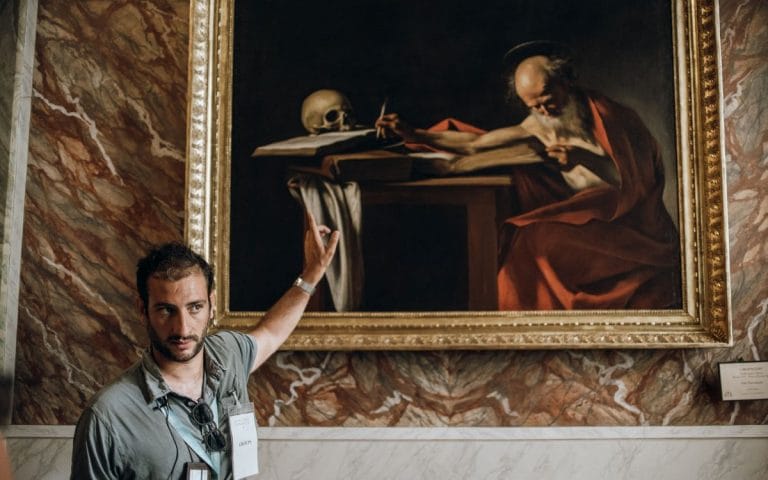
7 Artists at the Borghese Gallery That You Should Know
May 21, 2025
Art had a cultural currency beyond monetary value during the Renaissance. Representing the tastes, desires and, often, whims of the elite, paintings and sculptures served as manifestations of power. Those who controlled the finest works of art would go down in cultural history. For this reason, Scipione Borghese became one of the most ruthless and avid art collectors during the late Renaissance.
Though he would commission works himself, Borghese also resorted to theft, bribery and even kidnapping artists to get his hands on new masterpieces. In many ways, the Borghese Gallery got its name because of Scipione Borghese’s ruthlessness.
But of course, none of this would have been possible without the artists themselves. Read along to learn about some of the painters and sculptors who’ve made the Borghese Gallery one of the most enriching sites to visit in Rome.

The Rape of Proserpina by Bernini, found inside the Borghese Gallery
Table of Contents
ToggleCaravaggio
Renowned for his portraits and distinctive use of light, Caravaggio is one of the most famous painters of the Renaissance. He was involved in a number of scandals and duels which gained him a reputation—but for all the wrong reasons. Although only 21 paintings have been definitively attributed to the artist, he is known as a herald of the baroque era and his name has become synonymous with the Italian Renaissance.
Moving to Rome when he was 21, Caravaggio’s reputation with a paintbrush was soon matched by his reputation as a troublemaker. Unable to keep out of a brawl, Caravaggio’s greatest hits feature throwing a plate of artichokes in a waiter’s face. But it wasn’t just his personal life that was controversial. Caravaggio was severely reprimanded for using the corpse of a dead prostitute as the model for one of his paintings, ironically titled Death of the Virgin, one of the most infamous “killer” Caravaggio paintings in existence.

Saint Jerome Writing would make a stellar Halloween costume.
What kept Caravaggio out of trouble was the power and influence wielded by his wealthy patrons, which silenced many of his accusers. But he took things a step too far when he killed a well-known Roman pimp (over a tennis match of all things). Forced to flee Rome or face execution, he sought a papal pardon as he fled from city to city until he died in 1610.
Two of his most famous and groundbreaking works, Sick Bacchus and David with the Head of Goliath can currently be seen in the Borghese Gallery. Thought to be a self-portrait of the artist, Sick Bacchus was groundbreaking for its realistic portrayal of the mythical god Bacchus, usually depicted in the bloom of full health and vitality.
According to an account by Mancini, Caravaggio was in ill health after being kicked by a horse and spent some time in hospital before painting the self-portrait. Meanwhile, scholars have speculated that David with the Head of Goliath was painted by way of apology for his murder charge following his exile from Rome.

David with the Head of Goliath by Caravaggio.
Raphael
Along with Michelangelo and Leonardo da Vinci, Raphael was considered chief among the painters of High Renaissance classicism. Born in Urbino, a young Raphael was taught painting and sculpture in his father’s workshop but had to take on the mantle himself after his father died. Gaining a reputation as a skilled painter, his work caught the attention of Perugino, an established artist who invited Raphael to become his apprentice.
Heavily influenced by his predecessors, Leonardo and Michelangelo, Raphael soon moved beyond his master and carved out his reputation as an artist with a series of narrative paintings. Eventually, he moved to Rome where Pope Leo X appointed him commissioner of antiquities along with trusting him with a number of prominent commissions for the Vatican.
Raphael was at the height of his career when he died at only 37. According to his contemporary biographer, Giorgio Vasari, the artist spent a night of excessive lovemaking and fell into a fever. Apparently, he failed to reveal the cause of his ailment to his doctor and was given the wrong cure, causing his subsequent death.
Because of his prominent position with the pope, many of his paintings are currently housed inside Raphael’s Rooms in the Vatican. However, a number of notable pieces have made their way into the Borghese Gallery, including:
- Deposition, depicting the body of Jesus being carried from the cross to the grave which was commissioned by a mother to remember the death of her son as a result of gang violence.
- Portrait of a Man
- Portrait of a Young Lady with a Unicorn

The Deposition by Raphael
Correggio
Despite Correggio’s acclaim during the Renaissance, it was only during the 18th century that interest was renewed in his works. Perhaps it’s as a result of this that little is known of the painter’s early life, the first two decades of which he spent in his native town, Parma. But it is believed that Antonio Allegri da Correggio was taught how to paint by his uncle, Lorenzo Allegri. Once he outgrew his teacher, Correggio became an apprentice to the artist Francesco Bianchi in Modena.
Correggio’s works represent the transition between the high Italian Renaissance and the subsequent Mannerist style. His pieces can be found in a number of notable museums including the National Gallery of London, the Louvre, and the Rijksmuseum. However, perhaps his most famous work, the Danaë, is held in the Borghese Gallery. As a result of its subject matter (based on a classical story from Ovid’s Metamorphoses), the painting is rich with symbolism. It conveys the union of Zeus with Danaë, the daughter of Acrisius, in the form of a golden shower after she was locked away from him by her father.

One of the most popular art pieces in the gallery.
Rubens
Peter Paul Rubens was a Flemish painter born in 1577 in the town of Siegen. Moving to Antwerp in 1587 when he was just 10, a young Rubens received artistic training and completed an apprenticeship before moving to Italy in 1600 where he studied the work of Renaissance masters including Raphael and Michelangelo.
A true “Renaissance man,” Rubens was an ardent multitasker and would often engage in multiple projects at once. As a result, his artistic output was truly legendary.
Case in point, it is recorded that when the Danish doctor Otto Sperling visited him in his studio in 1621, he found the artist supervising his assistants, dictating a letter, having Tacitus read aloud to him and completing his own paintings—all at the same time.
Sperling (1995) later said, “When we kept silent so as not to disturb him with our talk, Rubens himself began to talk to us, while still continuing to work, to listen to the reading, and to dictate his letter, answering our questions and thus displaying his astonishing powers” (as cited in Peter Paul Rubens: Oil Paintings and Oil Sketches by David Freedberg, 1995).
One of his earlier works, The Deposition, is held in the Borghese Gallery. Depictions of Christ’s movement to his tomb became a popular subject in Renaissance art due to its variety of interpretations—at once a dramatic and epic scene and yet, at the same time, intensely personal and intimate. Rubens’ interpretation focuses on Christ’s sacrifice for humanity highlighting the wounds on his bare flesh. Human expressions take center stage while the light shining down infuses the scene with hope.

One of Ruben’s most revered pieces.
Bernini
Gian Lorenzo Bernini is one of the most revered sculptors of his age and the Borghese Gallery is home to the largest collection of his work in Rome. Number six of thirteen children, the young Bernini followed in his father’s footsteps and began sculpting when he was just a child. Upon moving to Rome when he was seven, he was found to possess great aptitude and, at the tender age of 10, is thought to have produced his first sculpture.
The pope declared his hope that Bernini would be the “Michelangelo of his century”. And he wasn’t far off in his estimations. Bernini went on to trail-blaze a name for himself through commissions and busts, going on to become one of the most sought after sculptors of his age. Then and now, the genius of Bernini cannot be understated.
Some of his most notable pieces currently on display in the Borghese Gallery include The Rape of Proserpina, completed when the sculptor was just 23 years old, and Apollo and Daphne completed in 1625 on a commission from Cardinal Scipione Borghese. The latter tells the classical story of the sun god Apollo’s pursuit of the Nymph Daphne. The Rape of Proserpina follows a similar theme, focusing on the abduction of the Greek goddess Persephone to the Underworld by Hades.

The detail on Apollo and Daphne is absolutely mind-blowing.
Titian
Perhaps most famous for his distinctive use of colours in his work, Titian, or Tiziano Vecelli, was one of the most famous practitioners of 16th century Renaissance art. Seeking out the rarest shades of pigments he could find, Titian would then use them in a saturated form. This meant that his work would have a particular flavour that few other painters could emulate. Biographers of his time said he lived to 104, but modern scholars argue he likely died in his 90s from a fever during the 1576 Venice plague.
Titian’s masterpiece Sacred and Profane Love is one of the showstoppers of the Borghese Gallery. The painting is thought to have begun life as a commission by Niccolò Aurelio, a secretary to the Venetian Council of Ten in celebration of his marriage to the young Laura Bagarotto. The identity of the two main figures is up for debate, but many theories surrounding their identities have been put forward by art historians. The most popular one assumes the painting depicts a bride attended on by the goddess of love, Venus.

Venus Blindfolding Cupid by Titian, found in the Borghese Gallery. Photo credit: arthistory390
Antonio Canova
All too often, artists aren’t appreciated within their own time. But that certainly wasn’t the case for Antonio Canova. By 1800, Canova had gained a reputation as one of the most revered sculptors in Europe. Along with that prestige, comes many prestigious commissions and chief among these was from the Bonaparte family, who requested a number of likenesses from the talented sculptor.
One of these was modeled after Pauline Bonaparte, Napoleon’s sister. Canova initially planned to sculpt Pauline Bonaparte as the goddess Diana, but she wanted a more scandalous image. So, she persuaded Canova to depict her as Venus, the goddess of love, reclining semi-nude on a couch.
This certainly would have caused a stir amongst the nobility so they came to a compromise; the statue would not be used for public display. Though the statue has certainly stood the test of time, the stipulation alongside it has not. Today, Venus Victrix (Venus Victorious) is one of the most popular statues in the Borghese Gallery.

Venus Victrix by Canova.
Update notice: This article was updated on September 11, 2023.
Want to explore the Borghese Gallery’s treasures firsthand? Join our guided tour of the Borghese Gallery and delve into one of Rome’s most distinctive collections of Renaissance art. With an expert guide at your side, you’ll gain insightful details that will enhance your appreciation of these magnificent artworks. Also, if you’re a super art history lover, then don’t miss these 7 art history podcasts that will be sure to inform and entertain you!
by Aoife Bradshaw
View more by Aoife ›Book a Tour

Pristine Sistine - The Chapel at its Best
€89
1794 reviews

Premium Colosseum Tour with Roman Forum Palatine Hill
€56
850 reviews

Pasta-Making Class: Cook, Dine Drink Wine with a Local Chef
€64
121 reviews

Crypts, Bones Catacombs: Underground Tour of Rome
€69
401 reviews

VIP Doge's Palace Secret Passages Tour
€79
18 reviews

Legendary Venice: St. Mark's Basilica, Terrace Doge's Palace
€69
286 reviews















